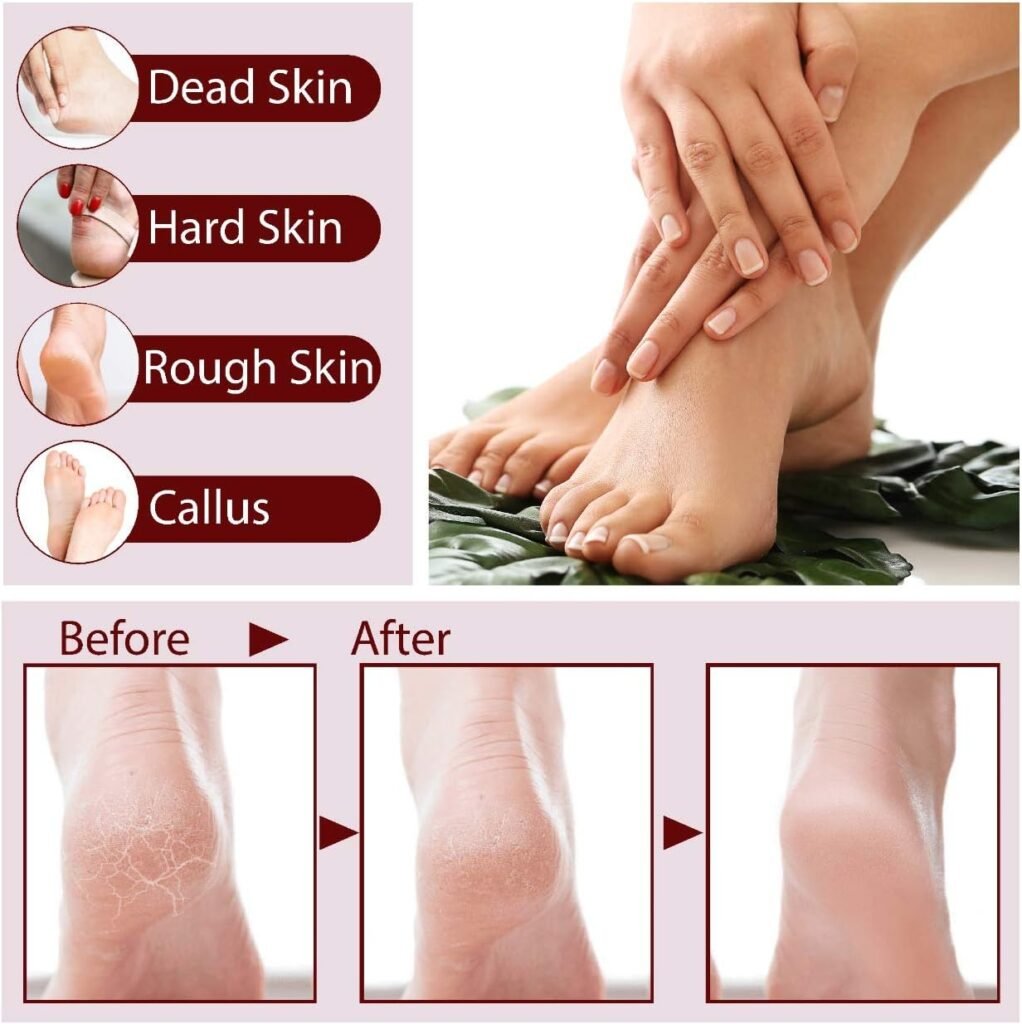Electric Callus Remover vs. Manual Tools: Which is Better?
When it comes to maintaining smooth and soft feet, the debate between using an electric callus remover and traditional manual tools is a common one. Each method has its own set of advantages and drawbacks, and the choice ultimately depends on your personal preferences, needs, and lifestyle. In this article, we’ll explore the differences between electric callus removers and manual tools to help you decide which is the better option for you.
Electric Callus Removers
Advantages:
Efficiency and Speed: Electric callus removers are designed to quickly and effectively remove thick calluses with minimal effort. The motorized action means you can achieve smooth results in a fraction of the time compared to manual tools.
Ease of Use: With an electric callus remover, you don’t need to apply as much pressure or perform repetitive motions. This makes them ideal for people with limited hand strength or mobility issues.
Consistent Results: Electric callus removers often come with multiple speed settings and different heads to ensure a consistent and even removal of dead skin. This can lead to a more uniform and professional-looking result.
Convenience: Many electric callus removers are cordless and rechargeable, making them easy to use anywhere, anytime. They also often come with built-in safety features to prevent overuse or injury.

Poshieca Electric Foot Callus Remover
Achieve professional spa-like results with Poshieca’s cordless foot callus remover, providing smooth, baby-soft feet at home.
Disadvantages:
Cost: Electric callus removers are generally more expensive than manual tools. While they offer long-term value, the initial investment might be higher.
Maintenance: Electric callus removers require regular cleaning and occasional replacement of heads or rollers. This adds to the ongoing cost and effort required to maintain the device.
Noise: Some electric callus removers can be noisy, which might be a drawback for those who prefer a quieter experience.
Manual Tools
Advantages:
Affordability: Manual callus removal tools, such as pumice stones, foot files, and callus shavers, are typically much cheaper than their electric counterparts. This opens them up to a larger group of individuals.
Simplicity: Manual tools are straightforward and easy to use. There are no batteries to charge or parts to replace, which can be a significant advantage for those who prefer a low-maintenance option.
Portability: Manual tools are compact and lightweight, making them easy to carry and use while traveling.
Control: Using a manual tool allows you to have complete control over the pressure and area being treated, which can be beneficial for targeting specific spots.
Disadvantages:
Time-Consuming: Manual callus removal requires more time and effort compared to electric devices. This can be particularly challenging for individuals with severe calluses or limited time.
Physical Effort: Using manual tools involves repetitive motions and can be physically demanding, especially for those with hand or wrist issues.
Inconsistent Results: Achieving an even and consistent result can be more difficult with manual tools, as it depends on your technique and pressure applied.
Which is Better?
The decision between an electric callus remover and manual tools ultimately depends on your personal preferences and needs. Here are some things to think about:
Budget: If cost is a major concern, manual tools might be the better option. However, if you’re willing to invest in a device that offers convenience and efficiency, an electric callus remover could be worth the extra expense.
Convenience: For those who prefer a quick and hassle-free solution, electric callus removers are generally more convenient and less labor-intensive.
Severity of Calluses: If you have severe or thick calluses, an electric callus remover might be more effective in achieving smooth results. For mild calluses, manual tools can suffice.
Frequency of Use: Consider how often you plan to use the tool. Electric callus removers might be more suitable for regular use, while manual tools can be handy for occasional touch-ups.
Conclusion
Both electric callus removers and manual tools have their place in foot care routines. Electric callus removers offer speed, convenience, and consistent results, making them ideal for those who prioritize efficiency and ease of use. On the other hand, manual tools are affordable, simple, and portable, providing a practical solution for those who prefer a hands-on approach. By evaluating your needs and preferences, you can choose the option that best suits your lifestyle and keeps your feet looking and feeling their best.


